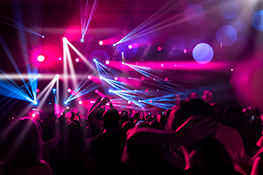Understanding the Inverse Square Law
Accurately calculating stage lighting is crucial for achieving the desired visual impact. A key principle governing light intensity and distance is the inverse square law. This law states that the intensity of light decreases proportionally to the square of the distance from the source. Simply put, if you double the distance between your light and the subject, the light intensity on the subject decreases to one-fourth. Understanding this principle allows for precise control over lighting levels on stage.
Calculating Lumen Output Needs
Before diving into distance calculations, we need to determine the required lumen output. This depends on several factors, including the size of the stage area, the desired illuminance (measured in lux), the reflectivity of the surfaces (sets, costumes), and the type of lighting fixtures used. A larger stage area, higher desired illuminance, and less reflective surfaces will require more lumens. The formula to calculate the required lumen output is:
Lumens = (Lux x Area) / Light Fixture Efficiency
Where:
- Lux: The desired illuminance level in lux (typically ranges from 200 lux for a subtle wash to 1000 lux or more for bright spots).
- Area: The area of the stage or specific section to be lit in square meters.
- Light Fixture Efficiency: This represents the percentage of lumens emitted by the fixture that actually reach the target area. It accounts for light loss due to optics, directionality, and atmospheric absorption. This is usually provided by the manufacturer and often expressed as a Beam Angle and a coefficient.
For example, to light a 10 square meter area to 500 lux using fixtures with 80% efficiency, the calculation would be:
Lumens = (500 lux x 10 m²) / 0.8 = 6250 lumens
Calculating Distance for Desired Illuminance
Once the required lumen output is determined, we can calculate the ideal distance between the light and the subject to achieve the desired illuminance. This calculation is based on the inverse square law and uses the following formula:
Distance = √(Lumens / (4π x Lux))
Where:
- Lumens: The total lumen output of the light fixture.
- Lux: The desired illuminance level in lux.
- 4π: A constant representing the surface area of a sphere (light spreads in all directions).
This formula provides an ideal distance, assuming uniform light distribution. In reality, factors like beam angle, light fixture design, and atmospheric absorption influence the actual illuminance. Therefore, fine-tuning may be required through on-site measurements and adjustments.
The Importance of Beam Angle
The beam angle of a light fixture significantly impacts the area it illuminates and the intensity at a given distance. A narrow beam angle concentrates light over a smaller area, resulting in higher illuminance at shorter distances. A wider beam angle spreads light over a larger area, leading to lower illuminance. Manufacturers specify beam angles, which are crucial to factor into distance calculations. Using lighting design software can greatly aid in visualizing the effects of different beam angles and fixture placements.
Practical Considerations and Software Tools
While these calculations provide a theoretical starting point, real-world stage lighting often involves complexities. Factors like light spill, color temperature, and the interaction of multiple lights need consideration. Specialized lighting design software programs provide advanced tools for simulating lighting scenarios, accurately predicting illuminance levels, and assisting in the optimization of fixture placement and settings. Experimentation and on-site measurements remain essential for fine-tuning lighting designs and achieving the desired artistic effect.


 Auditorium Construction Services
Auditorium Construction Services 